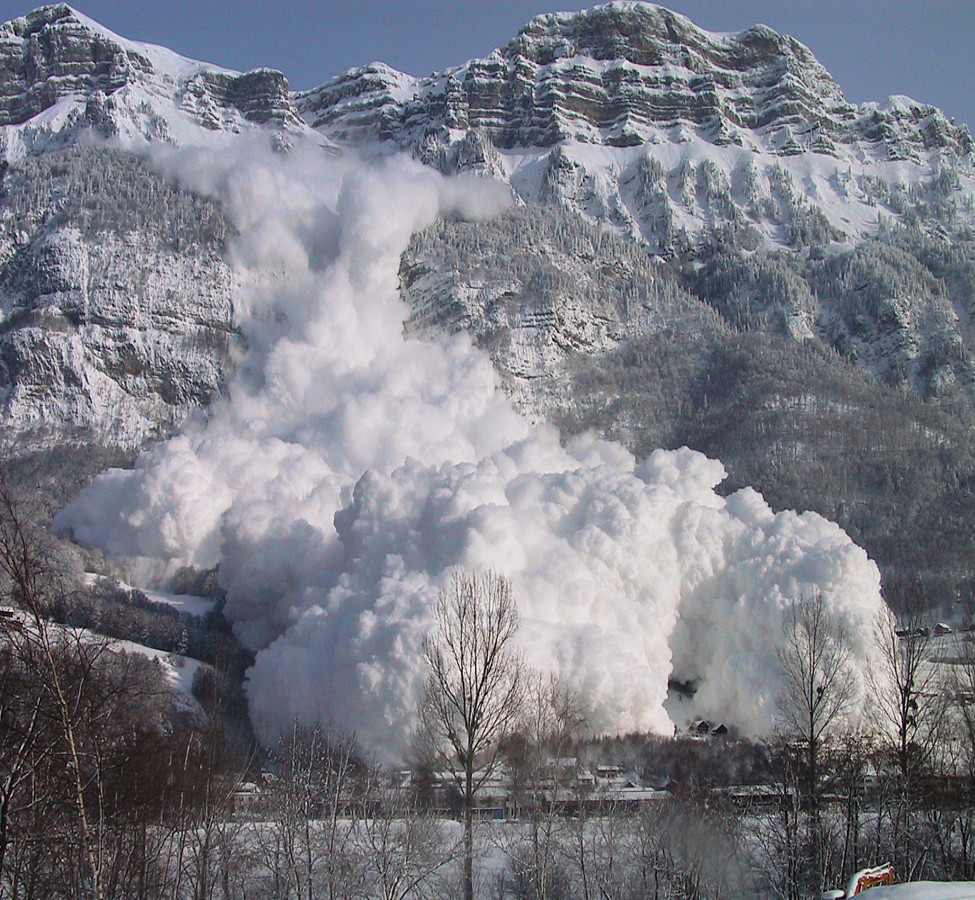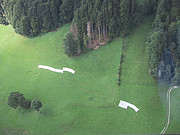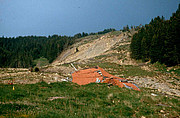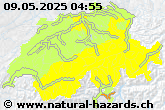Landslide
Landslides are downward movements of soil or rock masses on a sliding surface.
› How do I protect myself against landslide?
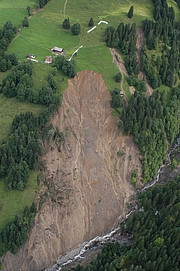
Landslides in Switzerland
Unstable slopes account for around 6% of the total area of Switzerland. The risk posed by landslides is not only determined by the speed and volume of the mobilised mass but, above all, by the displacement and varying differential movements of the individual clods of earth. These movements can severely undermine the stability of built structures and give rise to cracks in walls, subsidence and even collapse. The risk of collapse arises in the worst cases. Landslides can also cause damage to roads and pipelines. Floods and debris flows can also arise when a sliding mass enters a watercourse and blocks it temporarily.
More frequent and more extensive landslide processes must be expected in future due to the consequences of climate change: the expected increase in heavy precipitation and the increase in winter precipitation combined with the rising snowline mean that greater volumes of water will be available in future to trigger landslides. In addition, due to glacier retreat and the thawing of the permafrost, new areas with a greater vulnerability to landslides are now added to the existing unstable slopes.
An example of a major landslide occurred in the canton of Fribourg in 1994: the Falli-Hölli landslide destroyed around 30 holiday houses and caused damage totalling CHF 20 million.
